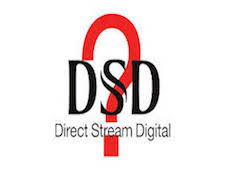It’s the time of year for saving money!
Don’t get too excited by that headline, because I don’t have a crystal ball and I make no claims to be a soothsayer. One has to admit, however, that for the immediate future, DSD specifically, and digital in general, is moving in all directions simultaneously and at an alarming pace.
 Manufacturers are trying to anticipate, and design, the next feature that might also be described as a benefit and how that feature may be incorporated into something new. Consumers are clamoring for so many different things on their collective wish list that knowing exactly what they want is difficult. So what does the future hold?
Manufacturers are trying to anticipate, and design, the next feature that might also be described as a benefit and how that feature may be incorporated into something new. Consumers are clamoring for so many different things on their collective wish list that knowing exactly what they want is difficult. So what does the future hold?
Consider amplifiers. We all know the popular topologies — Class A, Class AB, Class D and SET. Then there are the digital or solid-state options. I’d say the average audiophile essentially remains loyal to one type of amp design so new amps come fairly easily.
Consider speakers. You have dynamic, planar, electrostatic and horn, which once again offers choices most all audiophiles understand. Most have a preference and stay within a given technology when upgrading or replacing a speaker system.
Even turntables all pretty much do the same thing. The biggest decision is how much one wants to spend for analog.
Then we come to the fork in the road: digital. One could choose a full-fledged, standalone CD player. Plug it into an integrated amp or a preamp and play music. Then the bright minds made it possible to utilize a separate DAC. This ushered in all types of combinations. Cable companies love separates because it takes more interconnects and power cords to run them.
We’re moving from computer audio to dedicated components like a music server and a DAC. Suddenly it’s possible to store an entire CD collection on a purpose built device. This really opened the floodgates as now you have the ability to play music on something ranging from an MP3 all the way up to a multi unit stack whose cost can easily exceed six figures. The maker of my DAC, Esoteric, recently introduced a mono block DAC whose cost is in excess of $40,000. Some bargain, huh?
It doesn’t end with streaming; it might actually be argued that it begins with streaming. Who could have ever predicted, ten or fifteen years ago, that physical music collections could conceivably be abandoned in favor of music derived from the Internet? Streaming is so hot that its temperature is measured in the Kelvin scale. Another fly in the pudding is SACD. While this format admittedly sounds very good, realistically, it just never really caught on. Pick out 20 random albums or CDs in a music collection and see how many of them can be purchased as an SACD. Most likely very few. Whatever sonic achievements SACD provided are far overshadowed by the lack of availability — to say nothing of the cost.
 But audiophiles being audiophiles, we want the sonics of an SACD with the convenience of a CD. Enter DSD. We also want to play it on our system as is, free from another piece of equipment or some other separate component. Manufacturers responded by providing components that have far more capabilities than did the humble CD player when first introduced.
But audiophiles being audiophiles, we want the sonics of an SACD with the convenience of a CD. Enter DSD. We also want to play it on our system as is, free from another piece of equipment or some other separate component. Manufacturers responded by providing components that have far more capabilities than did the humble CD player when first introduced.
It’s almost uniformly common these days to have a digital playback system accept files up to 24/192. How many different manufacturers make components that can accomplish this is hard to say. Probably too many to count. This opened the door for companies like HDTracks and the others that sprang up to offer both convenience and sonics. Suddenly, you could have something that sounded better than the CD you drove to the store to buy without ever leaving the couch. Simply go online, download the files and play high res music. Easy as falling off a log. If you are really good, you can do it one handed while enjoying a Slurpee at the same time.
Remember those DACs? Well, regardless of what music is available, or in whatever format, many DACs now upsample to DSD resolution. How about four times DSD, or maybe eight times DSD? I have my DAC set to upsample to DSD but that is simply no more than a mathematical equivalent, the original format does not change. Is that really a sonic equivalent or a convenient equivalent? It is therefore no surprise that many DACs are now DSD-capable.
Digital downloads. The name alone causes manufacturers to panic because they fear they are behind the curve. Consumers are confused because they don’t know what technology will emerge as the best so do they buy now or wait? Think VHS vs. Betamax. What about the people who have a substantial library of SACDs? Do they just throw them away and start over? Last time I looked, copying an SACD was a pretty difficult thing to do unless you happen to have a really old school PlayStation.
 Oh, and let’s not forget availability of DSD and digital downloads. Most of what I’ve seen thus far just doesn’t interest me. I get e-mails from a number of companies several times a week advertising new downloads and every so often, I download one. Despite this, I still buy substantially more physical CDs.
Oh, and let’s not forget availability of DSD and digital downloads. Most of what I’ve seen thus far just doesn’t interest me. I get e-mails from a number of companies several times a week advertising new downloads and every so often, I download one. Despite this, I still buy substantially more physical CDs.
So what is the future of DSD and digital? Where we go from here is anyone’s guess. Buying into a particular technology or component comes with a certain risk because things are changing so quickly. What is purchased today, at high-end level prices no less, may well be obsoleted before you really understand its use. That makes consumers somewhat apprehensive. Yet, we buy the new thing, we download, we upsample, we do all this and will do it all over again as technology evolves. We do this all for one reason: for the music.





